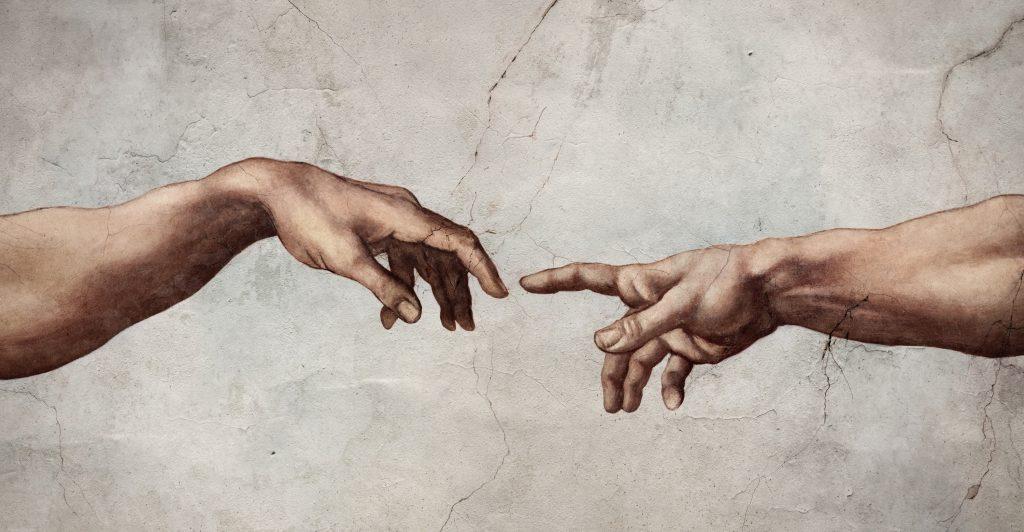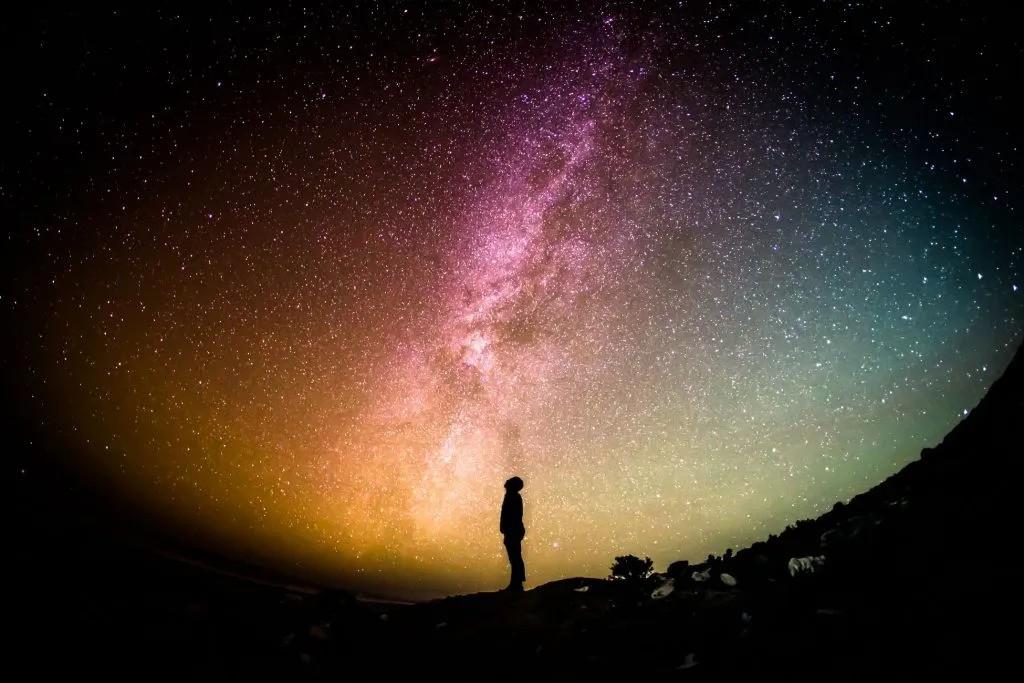Ego and essence
We are a divine spark, but we do not behave like a divine spark. If we reflect deeply on our psychological state, we come to find that we are fragmented. We find that there are moments where we experience sparks of divinity or the sense that we are something more than a corporal form, and moments where we are identified with a fit of rage, jealousy, etc…
When a person experiences a fit of anger, they may say afterwards “I don’t know what came over me, it’s not at all like me to say that type of thing…”. This is similar to the expression “blinded by anger”, used to describe someone who has acted irrationally and out of character.
In those moments we experience a part of ourselves which is not who we truly are, but is nevertheless a part of us. We cannot deny that we have moments of anger, outbursts of rage, fits of jealousy, etc, and so these aspects are within us, but they are not the essence.
The opposite is also true - those moments when we have an encounter with our interior spark, sometimes through reflective contemplation of who we are, through a practice of meditation or a deep emotional connection. In those moments we consciously understand that the essence (divine spark) is our true nature.
And so what we come to find through the experience of both extremes is that our identity is fragmented. We have this small spark of divinity, but for the most part we seem to be something different to that.
In mythology this is depicted through different archetypes that portray this hybrid that exists within - the hybrid of divine and non-divine.
We see this symbolised in:
Centaur (Greek Mythology): Centaurs are creatures with the upper body of a human and the lower body of a horse. They are often portrayed as wild and untamed, symbolising the struggle between human intellect and animal instincts.
Satyr/Faun (Greek & Roman Mythology): Satyrs and fauns are similar creatures, with the upper body of a human and the lower body of a goat. They are associated with revelry, wine, and music, often seen as mischievous and lustful beings.
Cynocephaly (Egyptian Mythology): In various cultures, particularly in Egyptian and Greek mythology, there are creatures known as cynocephali, which have the body of a human and the head of a dog. They are often associated with loyalty and protection.
These archetypes represent the dichotomy that exists within each of us, which is also depicted through symbols of light and darkness. For instance, the symbol of the Yin Yang also represents this truth, through the archetype of contrast.
With this understanding we come to realise that as a constitution we are compartmentalised and fragmented into divine and non-divine parts.
These are called the ego (non-divine) and the essence (divine).
What is the Ego?
The ego is what is called in psychology the subconscious and unconscious mind.
The subconscious mind typically refers to the part of our mind that lies just below the surface of conscious awareness. It consists of thoughts, feelings, memories, and information that is not currently in our conscious awareness but can be readily accessed with focused attention or when triggered by certain stimuli.
Because there is a limit to the information that can be held in conscious awareness, a storehouse of one’s knowledge and prior experience is used; this is the subconscious.
Most of our day-to-day interactions are unconscious. We interact through mental forms and concepts that confuse that experience with reality. We interpret reality through the five senses. This is a flawed way of perceiving things as it creates relative - rather than objective - concepts about what it is experiencing.
When we interact with the world on a daily basis we actually interact with a concept or ideology that we have pre-formed through past experiences. That interpretation of reality is tainted, and is known as the subconscious or ego.
When someone has success, in their career for instance, and they have a nice house with a nice car, instead of acknowledging that success we instead project our own psychology onto them, both mentally and verbally.
We might say to someone else “You know John, he’s so up himself, he only buys expensive clothes and he is so snobby and uptight, you wouldn’t believe what he’s like these days.”
In reality, this perception has come from our subconscious, from jealousy and envy. Our perception of reality is skewed because of our subconscious.
Even deeper than the subconscious we find the unconscious mind, which in esoteric terms is deeper parts of our ego.
The term "unconscious mind" is often associated with the psychoanalytic theories of Sigmund Freud. In Freudian psychology, the unconscious mind is the deepest and most hidden part of the mind. It contains thoughts, memories, and desires that are repressed or suppressed and are typically not directly accessible to conscious awareness.
The unconscious mind is a basement full of everything we have experienced, interpreted, and done since birth. It is here that “...all your memories and experiences since birth have been stored. It’s from these memories that your beliefs, habits, and behaviours are formed and reinforced over time.”
The unconscious mind feeds into the subconscious mind, which then influences our thoughts, feelings and actions, and determines how we will respond in a given moment.
The ego can be found portrayed across various cultures, such as:
- Christian Theology: In Christianity the ego is portrayed as the seven deadly sins; lust, gluttony, greed (avarice), slothness, anger, envy and pride.
- Egyptian Mythology: The red demons of Seth are legions of demons that belong to the Egyptian deity, and are often attributed with values of chaos, violence and storms, which is a personification of these non-divine elements that exist within.
- Buddhism: In Buddhism these non-divine elements that we carry within are known as the Demons of Mara. Mara is often considered the personification of desire, delusion, and temptation. Mara's demons are symbolic representations of various negative forces that can hinder one's spiritual progress and lead them away from the path to enlightenment. These demons are often depicted as trying to distract or disrupt the meditations of Buddhist practitioners, including the historical Buddha, Siddhartha Gautama, as he sought to attain enlightenment. Mara is associated with six demons, which correspond closely to the seven deadly sins that are presented in Christian Theology.
What is the essence?
In order to understand what the essence is, we must first examine our understanding of creation itself. The Gnostic wisdom teaches us that creation unfolded from a point known as the absolute abstract space. As creation unfolded, it travelled downwards, becoming more and more dense as it moved away from the absolute abstract space. As it unfolded, it formed different spheres (or planes) in accordance with the law of vibratory affinity. These spheres are beautifully depicted in the Yggdrasil Tree of Norse Mythology, which shows a tree (creation) with different worlds or realms situated throughout its branches. It is also shown in the Tree of Life of Kabbalistic mystics.
As creation unfolds and descends, so too does the spirit. The spirit leaves the absolute abstract space and follows the unfoldment of creation to its densest point - the physical dimension.
So we come from a source that is divine in nature, which means that we are divine. This divinity within us has been fragmented into pieces, each of them scattered throughout the tree of creation as unfoldment occurred. The piece, or fragment, of divinity that remains within us here in the physical dimension is the essence.
In Buddhism this essence is referred to as the buddhata, meaning that each person has a small fraction, a tiny piece, of the Buddha within them.
Unfortunately, because we do not recognise ourselves as an essence, we have, over time, formed a false identity, and so the essence has become trapped and dirtied by the ego. In the Arabic tradition this is shown by the genie who is trapped within the lamp. The lamp is the ego and the genie is the essence. The goal of the Gnostic mysteries is to first free the essence from the lamp (ego), and then smash the lamp so it cannot trap the genie (essence) any more.
Our divine spark is on a journey, one that is depicted throughout works of great literature in a concept known as the ‘Hero’s Journey’. These stories show their protagonist setting out on a quest of liberation and personal growth, and are a symbolic representation of the process that our divine spark needs to undertake in freeing itself from the constraints of the ego.

